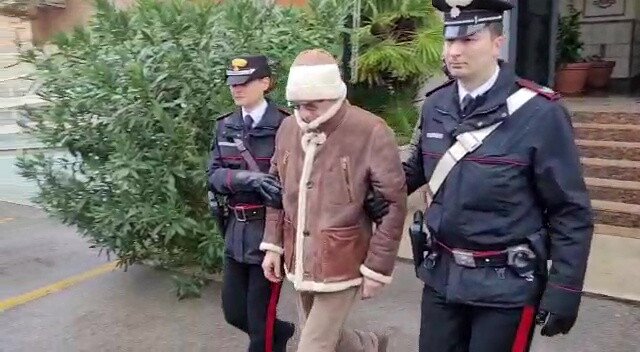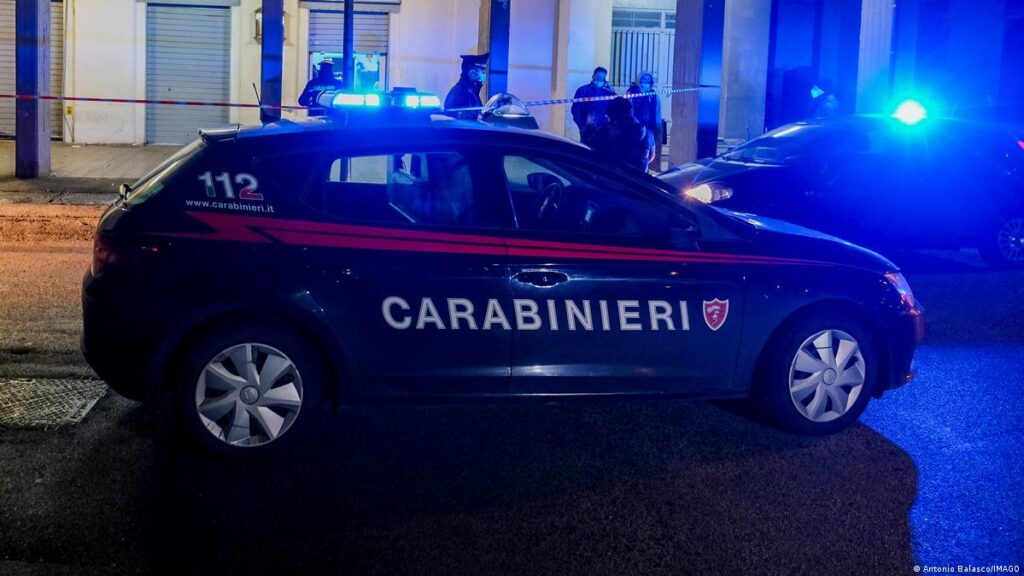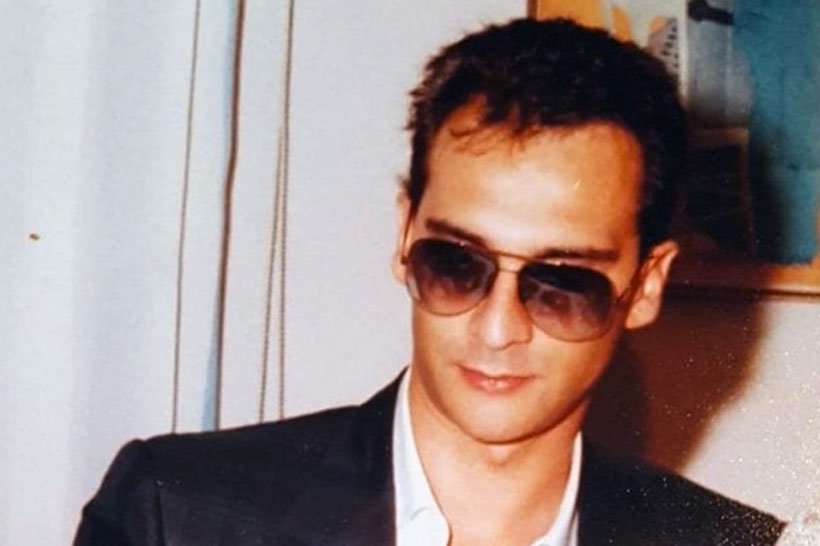After spending three decades on the run, Italy’s most wanted man—a Mafia boss convicted of aiding in the planning of some of the country’s most brutal murders—was apprehended on Monday while seeking medical attention at a private clinic in Sicily.
Matteo Messina Denaro was tried in absentia and found guilty of dozens of murders, including conspiring with other Cosa Nostra bosses to carry out two bombings in 1992 that killed prominent anti-Mafia prosecutors. This conviction prompted the Italian government to step up its pursuit of the Sicilian crime family. He is expected to serve numerous life sentences in a maximum security facility under the especially harsh conditions that are only intended for the top leaders of organized crime.
While still a young man, he went into hiding a year after those bombings, but even then, he was still regarded as one of the Cosa Nostra’s top executives. He was the last of three longtime top-level Mafia bosses who managed to avoid capture for years, and hundreds of police personnel were sent to track him throughout the years.

He is currently 60 years old, and, according to Carabinieri Gen. Pasquale Angelosanto, commander of the police force’s special operations section, his health state helped investigators locate him.
Authorities did not specify what he was being treated for, but Italian media said that he had been there for a year. He was found in the expensive La Maddalena clinic in Palermo, which is known for treating cancer patients.
Authorities said Messina Denaro’s treatment may continue at a hospital prison unit during an evening news conference.
He was unarmed, wearing regular clinic attire, and wearing a watch estimated to be worth at least 30,000 euros (about $33,000), according to investigators.
Col. Lucio Arcidiacono of the Carabinieri told reporters, “He didn’t resist at all.
Messina Denaro was led by two Carabinieri officers, each holding an arm, through the pouring rain to a waiting black van. He wore a white and brown skull cap that matched his outfit, his signature tinted glasses, and a brown leather jacket with shearling trim. He had a wan appearance and was looking directly ahead.
A rainbow was visible in the sky over the clinic shortly after his arrest as the sun started to emerge.
Locals sensed major things were going to happen as scores of police officers in ski masks converged on the clinic. There was thunderous cheering on the sidewalks when Messina Denaro was carried outdoors.
Reporters were informed by Palermo Chief Prosecutor Maurizio De Lucia that the wanted person went by the alias Andrea Bonafede and had an Italian identity card in that name. He made an appointment for the next morning at the clinic using the alias, whose last name roughly translates to “good faith” in Italian.
He was also found guilty of killing Falcone’s wife and several of their bodyguards, as well as the gruesome murder of a Mafia turncoat’s young son, who was kidnapped and strangled before his body was dissolved in an acid vat. He was also found guilty of killing prosecutors Giovanni Falcone and Paolo Borsellino.
Additionally, he was one of the Cosa Nostra leaders found guilty of planning a string of bombs in 1993 that injured people and caused damage to the Uffizi Gallery in Florence, two important churches in Rome, and an art gallery in Milan.
Prosecutor De Lucia claimed that “we apprehended the last of the massacre masterminds” of the 1992–1993 Mafia killings. The Republic “owed a debt to the victims of those years.”
The arrest of Messina Denaro, according to Italian Premier Giorgia Meloni, is a “huge success of the state, which demonstrates that it doesn’t capitulate in the face of the Mafia.”

The Mafia “boss of bosses” Salvatore “Toto” Riina was apprehended in a Palermo flat on January 15, 1993, after spending 23 years on the run. That was 30 years and a day prior to the arrest on Monday. During the summer of that year, Messina Denaro went into hiding.
Bernardo Provenzano, an Italian Mafia boss, holds the record for spending the most time hiding out. After 38 years on the run, he was apprehended in a farmhouse close to Corleone, Sicily, in 2006. As soon as Provenzano was in the custody of the police, attention turned to Messina Denaro, who eluded capture despite multiple reports of sightings, notably in northern Italy.
It won’t surprise Italy’s police and prosecutors that all three top executives were ultimately apprehended in the middle of Sicily after leading secret lives for decades. In order to move them from hideout to hideout, supply food, clean clothing, and communication, as well as a code of silence known as “omertà,” these leaders rely on contacts, the confidentially of fellow mobsters, and complicit family members.
Investigators say that Messina Denaro traveled outside of Sicily while on the run, including to Marseille, a port city in France, where he received surgery a number of years ago.
Riina and Provenzano refused to cooperate with authorities and spent their final years in the harshest Italian prisons available to recalcitrant organized crime bosses.
Some have hypothesized that Messina Denaro would consent to assist the prosecution in exchange for a more favorable sentence.
According to accounts in the Italian media, he had a string of relationships while hiding out and enjoyed playing video games. While on the run, Messina Denaro is thought to have fathered two children. One of his girlfriends was found guilty of hiding him for a while after being apprehended.
Messina Denaro wrote to his then-girlfriend shortly after going into hiding, saying: “You’ll hear gossip about me, they’ll depict me like the devil, but it’s all falsehoods,” according to the Italian news agency ANSA.
Mafia bosses frequently utilize handwritten messages, called as “pizzini,” to avoid being discovered by cellphone tracking. When Provenzano was apprehended in his remote hideout, authorities discovered a stockpile of these letters.
On Monday, Italian state television broadcast what it claimed to be an audio clip of Messina Denaro’s 1993 court appearance in Sicily. He was questioned by a judge who wanted to verify his identity and fill out paperwork.
When asked what he did, he said “farmer,” adding that his brother worked in finance and his four sisters were housewives. He claimed to reside in Castelvetrano, a small village close to Trapani that served as the command center for his criminal organization and provided him with logistical support while he was on the run, according to authorities.
The brother was already found guilty of Mafia affiliation. According to Italian press reports, one of the sisters was found guilty of assisting Messina Denaro in running the criminal organization while he was on the run.
The Cosa Nostra of Sicily was the target of a crackdown that started in the 1990s, and as a result, the mafiosi from the island began to lose ground to other organized crime groups in Italy.
On the mainland, the ‘ndrangheta syndicate, centered in the “toe” of the Italian peninsula, progressively surpassed Cosa Nostra in reach and power as the Sicilian Mafia was seriously undermined by a tiny army of turncoats.
The ‘ndrangheta is less susceptible to those who cooperate with authorities because, unlike Sicily’s other crime syndicates, it recruits its foot troops based on familial ties. One of the most potent cocaine traffickers in the world right now is the ‘ndrangheta.
However, the Sicilian Mafia continues to operate drug distribution networks. Infiltration of public works contracts and extortion of small business owners who are threatened if they don’t routinely pay “protection money” are two other lucrative illegal enterprises.





